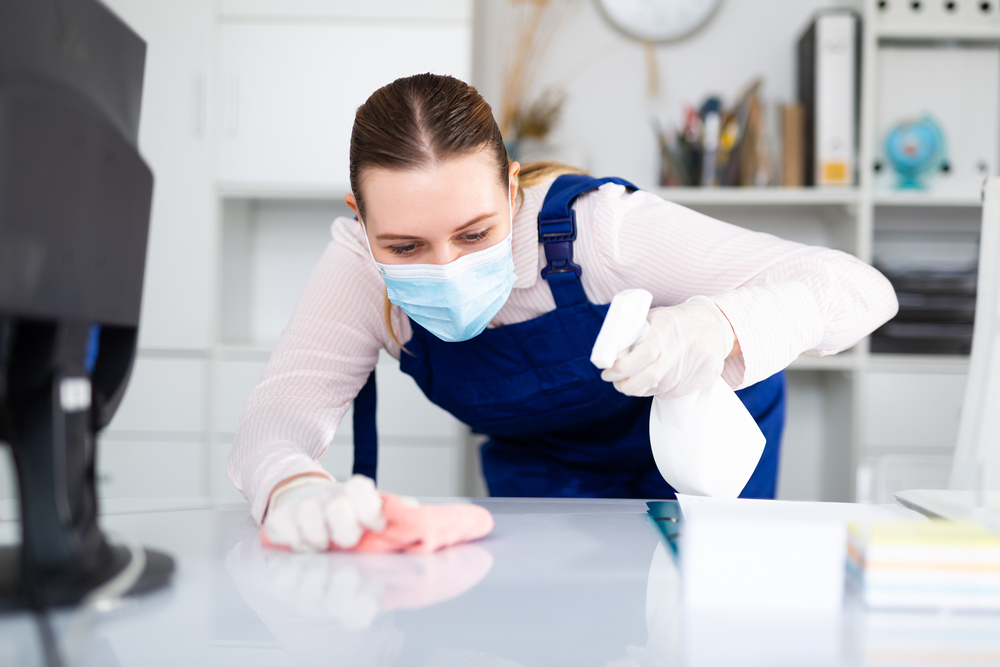Selecting the right chemicals plays a fundamental role in shaping your facility’s cleaning program, as even the most dedicated cleaning staff can’t make up for poor product performance. When deciding which cleaning chemicals to use, consider questions like: Do these chemicals target all pathogens of concern? Are there safety hazards? Is there a simpler alternative? With roughly 10% of all work-related asthma cases being associated with cleaning products, it’s more important than ever to not only consider the efficacy of products but their impact on indoor air quality and building occupants. Read on to learn recommendations for enhancing your approach to chemical selection and cleaning.
Overcoming Chemical Complexity
Purchasing cleaning chemicals is a complex process because there are numerous products on the market addressing different types of surfaces. Many of these come with unfamiliar ingredients. Further complicating this is greenwashing, which occurs when companies make false claims about their product’s environmental sustainability.
However, one way to simplify chemical selection and the cleaning process is with an on-site generator (OSG) that produces electrochemically–activated solutions (ECAS). Made from just water, salt and electricity, ECAS clean and disinfect just as well as other cleaning chemicals without a complicated list of ingredients. ECAS are also fragrance-free, non-irritating and drain- and disposal-safe, making them a safe and environmentally sustainable alternative.
Best Practices for Better Selection
Should you choose to use traditional cleaning chemicals rather than ECAS, you can follow the best practices below for determining whether a product is effective, safe and sustainable.
Closely review the ingredients.
According to the Environmental Protection Agency (EPA), 6% of custodians are injured by cleaning chemicals. Take the time to read product labels to understand the potential risks of listed ingredients. While reviewing the ingredients, ask yourself: Could the ingredients in one product be hazardous when mixed with another chemical? Can I rely on the efficacy of these cleaning chemicals? Are there pathogens of concern that these ingredients don’t address?
Understand how to use a product.
After reviewing the ingredients, read through the product instructions. Learn which surfaces a product can be applied to, how long it needs to remain on the surface to be effective (dwell time) and how it should be applied. Knowing how to use a product ensures you get the best performance from your cleaning chemicals while minimizing potential health risks for employees and building occupants.
Look for cautionary information.
It’s critical to identify how a product could impact cleaning performance and safety. Pay special attention to sections on the label where “WARNING” or “CAUTION” are written, as these are meant to highlight potential issues. Your cleaning staff may need to wear specific personal protective equipment (PPE) to enhance safety when using certain chemicals.
Identify certifications and approvals.
Determine whether a product has a certification or seal of approval from a legitimate third-party organization. This indicates that the claims being made about the product are accurate, which is especially helpful for avoiding greenwashing. For instance, Green Seal is a prime example of a trustworthy organization that provides approval to environmentally sustainable products. Green Seal also certifies cleaning service providers whose processes align with its standards should your operation require additional cleaning support from a building service contractor.
Maximizing Safety for the Best Results
Although it has always been important to consider the health of essential workers, the pandemic has shined a much brighter spotlight on their physical and mental wellbeing. Considering the impact of your cleaning chemicals is just as important as their effectiveness, and critical to building trust among employees and customers. The best way to meet the challenges of the chemical selection process is with ECAS or other safe chemicals that will simplify and improve the cleaning process.
At GSF USA, we use ECAS because we care as much about cleaning safely as we do effectively. For more information, contact our offices here and follow us on LinkedIn and Facebook for the latest updates.
